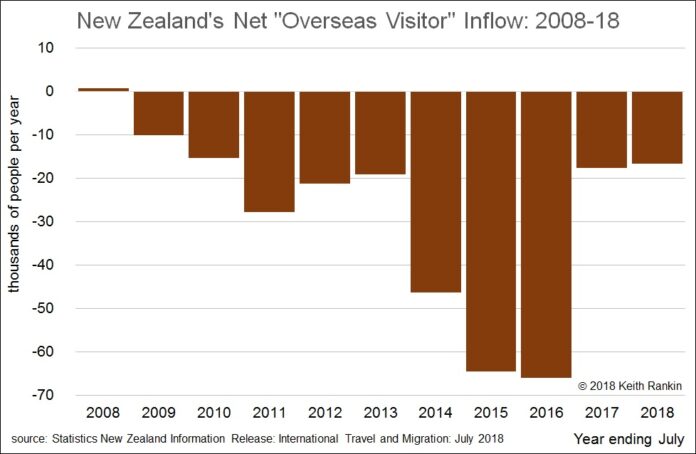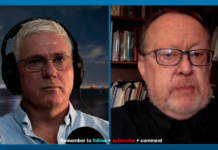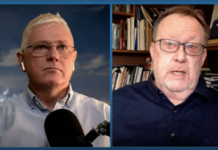The Conversation (Au and NZ) – By Ken Gelder, Professor of English, University of Melbourne
Since the beginnings of settler occupation in Australia, the kangaroo has been claimed at once as a national symbol and as a type of vermin to be destroyed en masse. In Kate Clere McIntyre and Michael McIntyre’s recent award-winning film, Kangaroo: A Love Hate Story, Sydney academic Peter Chen sums up this stark contradiction: “Kangaroos are wonderful, fuzzy, they’re maternal, and they’re also a pest that should be eliminated wholesale”.
The killing of kangaroos by Europeans began at exactly the same time that the species was first identified. Shooting, naming, describing, scientifically classifying, sketching, dissecting, eating: these things all played out simultaneously as soon as Cook’s Endeavour got stranded on a reef in far north Queensland in June and July 1770.
Lieutenant John Gore was the first to shoot a kangaroo; Cook noted that Aboriginal people called this animal “Kangooroo, or Kanguru”; the ship’s artist Sydney Parkinson produced two beautiful sketches of these creatures; and Joseph Banks went ashore to hunt with his greyhound and “dress’d” a kangaroo for his dinner.
Bits and pieces of dead kangaroos were shipped back to England, where Banks presented them to George Stubbs, an artist famous for his anatomical accuracy – and who had made his name as a painter of thoroughbred horses and hunting scenes. Stubbs worked with a stuffed or inflated pelt and drew on Parkinson’s sketches to produce the first painting of this newly-identified species, Portrait of the Kongouro from New Holland (1770).
George Stubbs, Portrait of the Kongouro from New Holland (1770). Wikimedia Commons.
An engraving of this painting – with the kangaroo gazing back over its shoulder (curiously? Is someone pursuing it?) – was used to illustrate the bestselling 1773 publication of Cook’s journal. As Des Cowley and Brian Hubber have noted, further engravings were made, the image began to circulate, and soon “the kangaroo had entered the European popular imagination”.
Joseph Lycett, Aborigines using fire to hunt kangaroo (c.1817). National Library of Australia.
The kangaroo hunt quickly became a recognisable genre in colonial Australian art. Joseph Lycett was transported to New South Wales in 1813, a convicted forger. His Aborigines using fire to hunt kangaroo (c. 1817) and Aborigines hunting kangaroos (1820) give us two early examples of “ethnographic” landscape painting where Aboriginal people hunt kangaroos in a fantasy precolonial space untouched by the impact of European settlement.
Joseph Lycett, Aborigines hunting kangaroos (1820) National Library of Australia.
In other works, however, Lycett placed Aboriginal hunters alongside settlers as mutual participants in the developing social and economic life of the colony. In these early days of settlement, kangaroos were a vital food source.
Lycett’s Inner View of Newcastle (1818) depicts a settler, a convict and an Aboriginal man walking in single file with four kangaroo dogs (usually, greyhound, deerhound and wolfhound crossbreeds); the convict is carrying the carcass of a freshly killed kangaroo over his shoulder.
Joseph Lycett, Inner View of Newcastle (1818). Newcastle Art Gallery.
Lycett’s View on the Wingeecarrabee River, New South Wales (1824) takes us down to the Southern Highlands, inland from Wollongong – where a settler with a musket, an Aboriginal man with a spear and two kangaroo dogs are all chasing down a single kangaroo.
Augustus Earle was a freelance professional artist who had travelled around the world – with Charles Darwin, among others. He spent two and a half years in Australia in the mid-1820s, chronicling metropolitan and bush scenes. His painting A Bivouac of Travellers in Australia in a Cabbage Tree Forest, Day Break (1827) gives us an idyllic scene of Aboriginal and settler companionship in the wake of a kangaroo hunt.
A group of settlers and two Aboriginal men are arranged around a campfire, waking up, preparing breakfast, and tending to a horse. There are two kangaroo dogs curled up and sleeping, and in the foreground of the painting – in the shadows, lying beside a rifle – is a large, dead kangaroo.
Augustus Earle, A Bivouac of Travellers in Australia in a Cabbage Tree Forest, Day Break (1827). Wikimedia Commons
Hunting clubs
S. T. Gill is probably the best known local artist to represent the kangaroo hunt as an organized recreational event. Colonial hunting clubs were established across Australia in the 1830s and 1840s; the first “meet” in Victoria, for example, was in 1839, organized near Geelong by the Indian-born military officer and pastoralist William Mercer. Squatters bred packs of hounds and wealthy locals and visiting dignitaries would be invited to join in the hunt and all the social occasions that went with it.
Foster Fyans was the Police Magistrate of Geelong and helped to oversee the dispossession of Aboriginal people across the western district frontier. “A noble pack of hounds was kept up by gentlemen squatters who met every season”, he recalled much later on, “hunting twice and thrice a week, and meeting at each other’s houses, where good cheer and good and happy society were ever to be met”.
Kangaroo hunting helped to consolidate squatter power and influence, lending it an available rhetoric of pleasure and merriment. No longer dependent on the kangaroo as a source of food, landowning colonists soon learned how to enjoy the thrill of the chase and the kill for its own sake, as a blood sport that came to define their social world.
Gill was a prolific chronicler of colonial life; his Australian Sketchbook (1865) included one scene, Kangaroo Stalking, in which a settler with a gun and an Aboriginal man hunt kangaroos together. In 1858 he produced a series of three lithographs under the general title Kangaroo Hunting. The first, The Meet, shows a gathering of men outside a rustic colonial homestead, with their horses and dogs (and some chickens; and a magpie on the roof). One of them has the conspicuous trappings of a wealthy squatter, tall, commanding, elaborately styled in black riding boots, yellow waistcoat, and scarlet jacket.
S.T. Gill, Kangaroo Hunting, The Meet, from his Australian Sketchbook (1865). National Library of Australia.
The second, The Chase, puts the squatter into the foreground, leaping over a fallen log on his powerful white horse. The reckless excitement of the hunt is obvious as the settlers gallop across the dangerous terrain, whips raised. The dogs are chasing a kangaroo, which is retreating into the distance.
S.T. Gill Kangaroo Huntin, The Chase, from his Australian Sketchbook (1865). National Library of Australia.
But the third lithograph, The Death, seals the animal’s fate. A squatter stands beside his exhausted hounds as a hunter readies his knife to take the dead kangaroo’s tail. Another hunter lifts his hat, looking back; perhaps he is greeting a group of Aboriginal people who are approaching in the background. The leader of this group – a family? – is carrying a spear; he may also be returning from a hunt.
S.T. Gill, Kangaroo Hunting, The Death, from his Australian Sketchbook (1865). National Library of Australia.
There is no sense of impending frontier violence here, but the lithograph does seem to register the differences between settler and Aboriginal relationships to the body of the dead kangaroo: who claims possession of it, and for what purpose.
Settler triumph
A portrait of Charles Darwin in the 1830s by George Richmond: he tried his hand at kangaroo hunting. Wikimedia Commons
Many notable visitors participated in organized kangaroo hunts: Charles Darwin in 1836 (“my usual ill-fortune in sporting followed us”), Britain’s Admiral of the Fleet Henry Keppel in 1850, the novelist Anthony Trollope in 1871.
Alfred, Duke of Edinburgh, shot about 30 kangaroos trapped in a yard. State Library of Victoria
The Duke of Edinburgh came to the colonies in 1867 – the first royal visit – hunting kangaroo in South Australia and then travelling out to Victoria’s western district for more sport.
The Russian-born colonial artist Nicholas Chevalier accompanied him on tour, staying at the squatter John Moffat’s luxurious homestead Chatsworth House at Hopkins Hill, where he sketched a number of hunting scenes. The Duke himself shot at close range over 30 kangaroos trapped in a yard; he got the locals to preserve the skins and claws.
A few years earlier, Chevalier had joined an expedition to the Grampians, producing two significant landscapes. Mount Abrupt (1864) shows an Aboriginal family peacefully camping on a plateau above a gully, with cattle grazing on the pastures behind and the mountain in the background. This family is not (yet) dispossessed from what is clearly settler property.
Nicholas Chevalier, Mount Abrupt (1864). Hamilton Art Gallery, purchased by Hamilton Art Gallery Trust Fund – M.L Foster Endowment with assistance from the Friends of Hamilton Art Gallery.
Mount Abrupt and The Grampians – produced the same year and published as a lithograph in Charles Troedel’s The Melbourne Album – gives us the same perspective of this mountain. But now there is no Aboriginal family. Instead, a group of settler hunters and their hounds ride roughshod over the place this family had once occupied, chasing kangaroos. It is as if the hunt itself has erased any trace of Aboriginal occupation of land. Its depiction is an expression of settler triumph over both native species (the kangaroo will surely be killed) and Indigeneity (Aboriginal people have been dispossessed).
Nicholas Chevalier, Mount Abrupt and The Grampians (1864). National Library of Australia.
Godfrey Mundy was another officer who had served in colonial India. He came to Australia in 1846, where he held a senior role in colonial military administration. He was also the cousin of Sir Charles Fitzroy, who by this time was Governor of New South Wales. Together, they went across the Blue Mountains on a month-long journey that became the basis for Mundy’s bestselling diary and narrative of colonial development, Our Antipodes (1852).
Mundy also illustrated his book; one of the illustrations is titled Hunting the Kangaroo. Here, two hunters are in hot pursuit of a kangaroo, with their hounds leading the way. One of the hounds has the kangaroo by the throat; the other lies injured at its feet. Interestingly, Mundy depicts himself as one of the hunters, with his initials “G.M.” branded on the shoulder of one of the horses.
Godfrey Mundy, Hunting the Kangaroo (1852). Our Antipodes.
On 30 November 1846, Mundy writes, “the resident gentlemen of the vicinity…attempt to show [us] the sport, par excellence, of the country”. But they find only one kangaroo, which eludes them. The landscape makes the kangaroo hunt difficult and dangerous, with uneven ground, tree stumps, and so on. Mundy rides “at full speed into the fork of a fallen tree” and has to “retreat”. But in his sketch, he is still proudly mounted on his horse and in full pursuit; and the kangaroo is about to die. This is the kangaroo hunt sketch as wish-fulfilment, a fantasy conclusion.
Sympathy for the kangaroo
Edward Roper was a keen naturalist and artist who travelled around the world, coming to Australia in 1857. His landscape A Kangaroo Hunt under Mount Zero, the Grampians (1880) has four hunters galloping through a woodland of eucalypts and grass trees, chasing three kangaroos. A long brushwood fence separates the hunters from their quarry. The riders and their hounds are approaching the fence at break-neck speed, highlighting the thrills and dangers of the chase; this is their land now, and they ride across it as a post-frontier expression of settler freedom and exhilaration.
Edward Roper, A Kangaroo Hunt under Mount Zero, the Grampians (1880). National Library of Australia.
Roper’s After the Flying Doe gives us a similar scene, although with a closer view of everything including Mount Zero, which now looms large in the background. There is no fence in this version: two hunters on horseback are pursuing kangaroos, with a couple of hounds racing along in front.
Edward Roper, After the Flying Doe. Benalla Art Gallery. Source: Ledger Gift, 1985.
Unusually, the kangaroos themselves are in the foreground of the painting. The “doe’s” femininity is apparent in the delicate representation of her features, and possibly there is a joey peeking from her pouch. It looks like this painting wants to invite some sympathy for the female kangaroo’s plight by placing her in the foreground, emphasizing her gender and invoking her directly in the title.
What happens when male hunters kill a female kangaroo? “Colonial Hunt” is the first poem published in Australia on an Australian topic; it appeared in the Sydney Gazette in June 1805. Here, a female kangaroo (“Kanguroo”) is pursued and trapped by a hunter and his dog. “Fatigu’d, broken hearted, tears gush from her eyes”, the poet writes, as she realizes her fate.
The kangaroo that weeps when it dies offers a rare moment of sentimental identification with a native species that by 1805 is already a target for extermination. We don’t see kangaroo tears again until Ethel C. Pedley’s Dot and the Kangaroo (1902). In this famous children’s story, a female kangaroo’s sadness over the ecological toll of settlement is now shared by all native species: “Every creature in the bush weeps”, she says, “that they should have come to take the beautiful bush away from us”.
Organised hunts could kill any number of kangaroos; alongside hunting meets that pursued individual roos as game, squatters also organised large scale drives or battues, which could see thousands of kangaroos rounded up, slaughtered and left to rot.
Kangaroos are no longer hunted on horseback, of course. But small – and large -scale killing continues unabated. Recently, the New South Wales government relaxed kangaroo culling licences, consistent with the view of the kangaroo as a “pest” that competes with livestock for survival in drought conditions. If we add this to that government’s plan to expand and intensify forest logging, it’s easy to sympathise with the kangaroo’s complaint in Pedley’s turn-of-the century fantasy.
– Friday essay: the art of the colonial kangaroo hunt
– http://theconversation.com/friday-essay-the-art-of-the-colonial-kangaroo-hunt-102169]]>






 Voters in France, who will not be taking part in the New Caledonia referendum, comment on the future of the former colony.
Voters in France, who will not be taking part in the New Caledonia referendum, comment on the future of the former colony.
 Voters in France.
Voters in France.
 Voters in France.
Voters in France.
 Voters in France.
Voters in France.
 Voters in France.
Voters in France.
 A voter in France.
A voter in France.
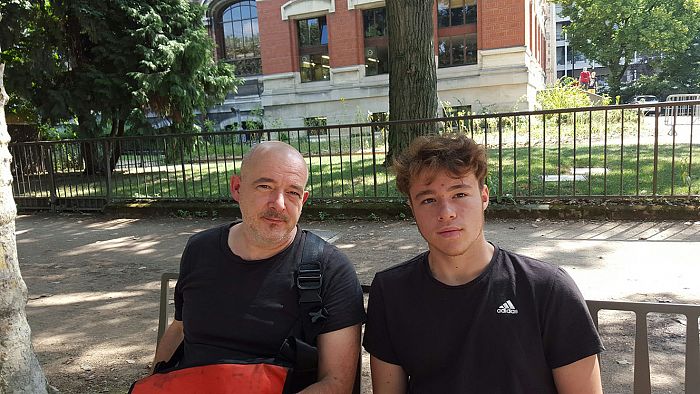 Voters in France.
Voters in France.









 A statement from West Papua Action Auckland group said today New Zealand had the opportunity to be a game-changer at this Forum meeting.
A statement from West Papua Action Auckland group said today New Zealand had the opportunity to be a game-changer at this Forum meeting.
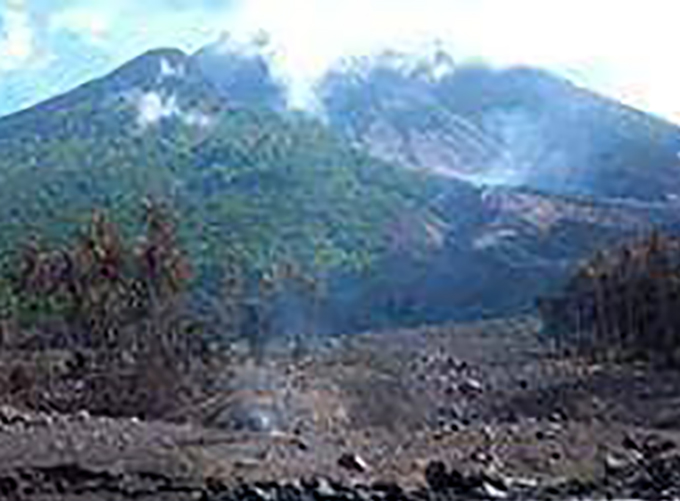
 A Manam islander trying to breathe surrounded by ash. Image: James Tuguru/The PNG News Page
A Manam islander trying to breathe surrounded by ash. Image: James Tuguru/The PNG News Page
